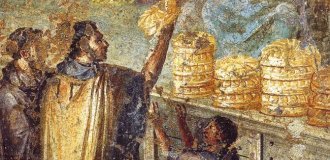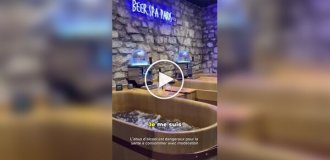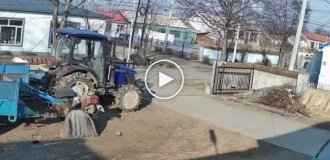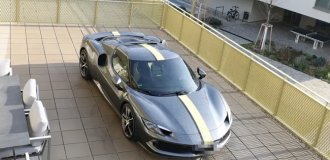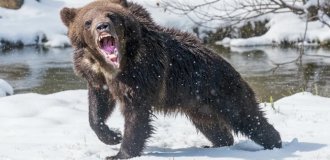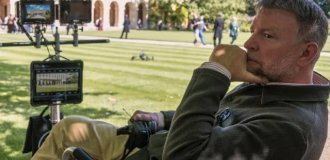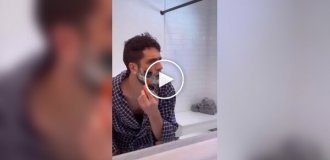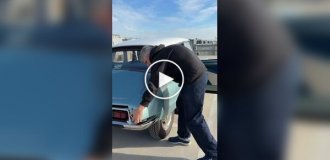Back to the Future. Interesting facts (84 photos)
We all love this truly great film. I watched it 10 times, every episode)). And I would watch it again with pleasure.
There were curious people who carefully looked at this wine and compared some data.
The result is a VERY interesting collection of various inconsistencies and other interesting things, which I recommend for viewing.
I warn you right away, there are a lot of letters, but it’s worth it.

The director proposed this idea for a film to various film studios. At that time (80s) there was a big fashion for teen comedies with sexual jokes. Therefore, most film studios abandoned the project: it was too decent for them. When Zemeckis offered the film to the Disney studio, they refused, considering the plot in which a mother falls in love with her unborn son, on the contrary, too vulgar.
Sid Scheinberg, head of Universal Studios, demanded that Robert Zemeckis and writer Bob Gale change the script. First, Marty's mother should have been named Meg, not Lorraine (Scheinberg's own wife was named Lorraine). Doc Brown was supposed to have a chimpanzee as his companion, not a dog. And finally: Shainberg believed that a film with the word “future” in the title could not be a box office success - and demanded that the title be changed to “Space Man from Pluto”. In the scene where Marty McFly claims his name is Darth Vader from the planet Vulcan, he should have said "from the planet Pluto". Scheinberg sent a corresponding memorandum. Executive producer Steven Spielberg came to the director's aid: he sent back, "Thank you, Sid, for the good joke - we laughed a lot." To save face, Shainberg did not insist.
The film begins in the same way as The Time Machine (1960) - with a collage of different clocks.
At the beginning of the film, a clock is shown with a man hanging from it. This is the famous scene with the participation of comedian Harold Lloyd (1923 film "Safe at Last"). In this film, Harold Lloyd hangs from the tower clock... and it is this scene that is parodied by the other Lloyd, Christopher, at the end of the film, hanging from the town hall clock.

The newsreader at the beginning of the film is actress Deborah Harmon, who had previously starred with Robert Zemeckis in the 1980 film Used Cars.

At the beginning of the film, it is clear that Doc Brown has a hobby - he plays the saxophone.

The huge amplifier to which Marty attaches an electric guitar in Doc's laboratory at the beginning of the film is designated CRM-114. This is the name of the message decoder in Stanley Kubrick's film "Dr. Strangelove, or How I Learned to Stop Worrying and Love the Atomic Bomb." In addition, this is the number of the spaceship from the film "2001 - A Space Odyssey", also by Stanley Kubrick.

The sunglasses that Marty wears at the beginning of the film were purely for promotional purposes, and do not appear again in the trilogy. The film received several contracts to position advertising products. Some of them are obvious (Pepsi, Texaco, Toyota), while others are not. The California Raisin company, the raisin manufacturer, paid $50,000 to have their product appear in the film. But there was no place for raisins in the script, and besides, according to Bob Gale, "on film, raisins look like a bunch of crap." Therefore, the company logo was painted on the bench on which the homeless Red sleeps at the end of the film. The company protested and the fee was returned to her.
In 1985, Doc Brown lives in the garage of his 1955 villa. The house itself burned down! At the beginning of the film, this can be read on newspaper clippings hanging on the wall. In addition, it also says that he sold his land to developers - which is why in 1985 there is a Burger King restaurant next to Brown's house.

At the beginning of the film, where Marty McFly participates in a music competition. groups, singer Huey Lewis, the author of songs for the film "The Power of Love" and "Back In Time", appears as one of the judges. It is he who, when Marty plays the instrumental version of "Power of Love", complains that the band is "loud".

The blonde guy next to Marty, who is shown in the same scene, is Paul Hanson, Michael J. Fox's guitar teacher, who trained him for the film.
The license plate of the car that Marty and Jennifer pass after the audition reads "FOR MARY" - in honor of Mary Radford, an assistant to the second unit director, Frank Marshall.

All of the 1985 scenes in the courthouse square were filmed towards the end of filming. The city scenes were first created in bright colors for 1955, and then “aged” and stripped for 1985. Many of the shops that existed in 1955 closed in 1985. The bench on which Marty and Jennifer are sitting bears the logo of the Zales jewelry store, which is now located in the Two Fir Trees shopping center. In 1955, this store is still located on the main square!

At the beginning of the first part, the cornice in front of the clock face on the courthouse is intact, since Marty has not yet changed the past. After Doc trips and knocks down part of the cornice at the end of the film (in 1955), that piece is still missing in 1985. And in 2015 it’s not there either!
Jennifer puts her phone number on a watch restoration flyer. Her number is 555-4823. In American films, all phone numbers begin with 555 so that no one actually calls them, since this code does not exist in the USA.

When Back to the Future was released in cinemas in Australia, Michael J. Fox had to appear in a TV spot for Australian television and warn the public about the dangers of clinging to cars on a skateboard.
The lion statues at the entrance to the Lyon Estate are modeled after the lions that grace screenwriter Bob Gale's hometown of St. Louis.
Crispin Glover, who played George McFly, Marty's father, is actually three years younger than Michael J. Fox.
To transform from 23-year-old Leigh Thompson to 47-year-old Lorraine McFly, she had to spend 3 hours in the dressing room.
On October 26, 1985, at 1:20 a.m., a crowd of fans gathered in the parking lot of Puente Hills Mall, where the Two Fir Trees shopping center was filmed, to see if anything would happen. The film was released in the USA in June 1985, so the events of 1985 shown in the film were yet to come...
The concept of the time machine changed many times during the script. At first it was a laser device the size of a room. Then the time machine began to look like a refrigerator. Robert Zemeckis said in an interview that the concept was scrapped for fear that small children would climb into the refrigerator and get hurt. There was another idea - to return to 1985, the DeLorean had to be taken to the atomic bomb testing site. Even a version of the script with this idea has been preserved.
The film uses a 1981 six-cylinder DeLorean. On the DVD it is incorrectly labeled as a four-cylinder.
The cover on the nuclear reactor at the rear of the DeLorean is actually a Dodge Polaris wheel cap.

On the DeLorean in the film, the speedometer reaches 95 mph. But on real speedometers of DeLoreans up to and including 1985, the scale reached only 85 miles! Not enough for time travel.


The colors of the time setting display in the time machine (red, green, yellow) are a reference to the 1960 film “The Time Machine,” which used lamps of the same colors.


There are two inscriptions on the streaming drive: “Disconnect drive drive before opening” and “Protect eyes from light.”
Doc Brown always wears several watches. This is especially evident when he explains to Marty how the time machine works. This habit remains with him for a long time, as this photo from the second part shows.

To travel through time, you need to reach a speed of 88 miles per hour. The number 8 rotated 90° means “infinity” in mathematics. However, Bob Gale said in an interview that the number 88 was chosen arbitrarily - it just sounds good.
In the Robert Zemeckis film Death Becomes Her, Goldie Hawn says that on October 26, 1985, she drank the elixir of eternal youth. This is the date of the first time travel.
The date Marty is time-traveled to is November 5th. This day is the goal of time travel in the films Time After Time (1979) and Timerider: The Adventures of Lyle Swann (1982). In addition, November 5th is the birthday of scriptwriter Bob Gale's father. In addition, it was the father who unwittingly gave the plot of the film to Bob Gale. As Bob looked at his father's old school album, he wondered if they would have been friends if they had gone to school at the same time. Thus was born the idea of a teenager confronting his peer parents. Another date was chosen for the reason that in American schools, balls, as a rule, take place in November.
The son of old Peabody, who lived on the site of the shopping center, is named Sherman. Sherman was the name of the boy from the cartoon The Adventures of Rory and Bullwinkle, who traveled through time with his dog. The dog's name was Mr. Peabody.
The fictional comic strip Tales from Space appeared at least twice in the Oliver Beene series.
It wasn't in the script that Marty would bang his head on the DeLorean's door. This idea came up during filming, when the door mechanism was quite worn out and the door did not open fast enough.
According to the book published alongside the film, Marty hides the DeLorean in the garage of his parents' unfinished home in Lyon Estates. But the budget did not allow for the creation of an entire street in an unfinished form - and therefore, in the film, Marty hides the car behind a billboard.
In 1955, in addition to the film with Ronald Reagan, two more films were released in cinemas: "This Boy's Life" (the working title of Spielberg's film "E.T. - the Extra-Terrestrial") and "Watch The Skies" (the working title of Spielberg's film "Close Encounters of the Third Kind" ). These same films are being released into cinemas in the film "Gremlins", which was also produced by Steven Spielberg. By the way, “Gremlins” themselves were filmed on the backstage of the main square from “Back to the Future.”
The square in front of the courthouse looks like a flow storage tank from above.

The bell on the courthouse tower plays the same tune as the clock in the 1960 film The Time Machine, based on the novel by H. G. Wells. It is also the melody of the bells of London's Big Ben.
Mayor "Goldie" Wilson was nicknamed because of his gold tooth.


The surnames of Mayors Red Thomas and Goldie Wilson together form the name of the actor who played Biff Tannen, Thomas Wilson.
The Calvin Klein brand was fairly unknown in Europe in 1985. Therefore, in the Italian dub in 1955, Marty is called "Levi Strauss". In the French dub his name is "Pierre Cardin"...
In Italy, television was state-owned, and the concept of “Rerun” (rerun) did not exist in this language. Therefore, in the Italian dub, Marty saw the television show "on video". In the Russian translation, he saw it “in the recording.”
Lorraine has a brother and a sister. Brother Milton is played by Jason Hervey, who later starred as the title character's brother in The Wonder Years. Sister Sally is played by Maya Brewton, who later played the title character's sister in the television series Parker Lewis. Thus, they continued the tradition of playing the main character's brother/sister.
Linda McFly's T-shirt reads "Class of '84." Michael J. Fox starred in the 1982 film with the same name.
Hill Valley School is actually located in Whittier, California. Former US President Richard Nixon studied at this school.
In the scene in which Marty visits George at school, there is a sign in the background that says "Ron Woodward for Class President!" Ronald Woodward is “Key Grip”, that is, the main production worker of the film.

As Marty and Doc walk through school, there is a "Bulldogs vs. Indians." The Bulldogs were an American team. Bob Gale Elementary School football and the Indians Middle School football.

When Marty visits George dressed as Darth Vader, he plays Van Halen music through his Walkman. However, this does not refer to the band Van Halen, but to their main guitarist, Edward Van Halen. If you look closely, you can see a small note “Edward” on the cassette. In order to use the group's name in the film, it was necessary to obtain the consent of all its members. Since this could not be done, the producers secured the consent (and name) of only the leader of the group. The song Marty plays on the player is called "Untitled" and was actually written for the movie "The Wild Life" (1984). This film stars Eric Stoltz and Lee Thompson.
Eric Stoltz was even slated to play Marty McFly! Michael J. Fox was contracted to the series Family Ties and could not take part in the film. A few weeks into filming, producers realized that Stoltz was not suitable for the role of a teenager. So he was fired from the film, and Marty McFly's entire wardrobe had to be updated.
However, when Michael J. Fox was filming Back to the Future, he was still under contract to Family Ties. Therefore, during the day he starred in the series, and at night he went to film the film. Therefore, the first thing we did was film the night scenes (parking at the shopping center, returning to 1985, etc.). Daytime filming took place on weekends.
Eric Stoltz can still be seen at one point in the film. He had already been filming for several weeks and many of his scenes had already been filmed. In the scene in which Marty knocks Biff down with a punch (in the 1955 cafe before the skateboard chase), Eric Stoltz's fist is shown. There are also rumors that the scene in which Marty dives into the DeLorean in the parking lot to escape the Libyans also features Stoltz. Nevertheless, experts are still arguing over this scene: Stoltz had a completely different costume in these scenes.
Claudia Wells was cast to play Jennifer opposite Eric Stoltz. However, the filming schedule kept changing, and in the end she was unable to take part in the filming. Actress Melora Hardin was hired to replace her. However, after Stoltz was fired, Melora turned out to be taller than Michael J. Fox - and thus not suitable for the role of his girlfriend. Claudia Wells, meanwhile, was released again and got the role of Jennifer back. Nevertheless, Hardin also managed to get acquainted with time travel: she starred in the series Quantum Leap and Time Patrol.
In addition, another actor was also planned for the role of Doc Brown at one time. John Lithgow, known for the TV series “3rd Planet from the Sun.” He even starred with Christopher Lloyd in the film The Adventures of Baccarat Banzai in the Eighth Dimension, where he played a mad scientist (!). And Christopher Lloyd played an alien there.

Christopher Lloyd played the character "Emmett L. Brown" as a mixture of Albert Einstein and composer Leopold Stokowski.
Lee Thompson (Lorraine) and Christopher Lloyd (Doc) have starred together in six films: the Back to the Future trilogy, Dennis the Menace, The Right Not to Answer Questions and the TV movie Haunted Lighthouse. However, during all this time they had only one conversational scene:
Marty: This is Doc... my uncle! Dr. Brown.
Lorraine: Hello.
Doc: Hello.
The beginning of Chuck Berry's "Johnny B. Goode" is a 1:1 match to the beginning of the Beach Boys' "Fun, Fun, Fun." "Johnny B. Goode" was released in 1958, "Fun, Fun, Fun" - in 1964
During the performance of "Johnny B. Goode", the leader of the band at the ball, Marvin Berry, calls his cousin Chuck. Chuck Berry is the author of the song “Johnny B. Goode.”
In the credits of the first part it is written that the song “Johnny B. Goode” is performed by Marty McFly. It was actually sung by Mark Campbell, with Tim May playing the guitar solo.
For the scene in which Marty's brother and sister appear in the photo, special effects studio Industrial Light & Magic (ILM) made a guitar neck 3-4 times larger than normal and used an enlarged photo. This was the only opportunity to realize this effect in 1985.


In one of the older versions of the script, Marty caused a riot at the school prom with his rock and roll. A police squad arrives to extinguish them. Additionally, in that version of the script, Doc obtains the secret ingredient of Coca-Cola. And when they go back to 1985, all the cars look like they did in the 50s - but they can fly... Some traces of this concept can be seen in the second part, in the commercial for Goldie Wilson III.
If you look closely at the keys to the DeLorean, on the key fob it says “555-1128 OUT-A-TIME” and on the back it says “Brown Dr. – JFK – Hill Valley, CA.” This is Doc's phone number and address!


The DeLorean's headlights flash in Morse code: three dots, three dashes, three dots: SOS!
The bum on the bench whom Marty calls "Red" is not former Mayor Red Thomas from 1955. Michael J. Fox improvised this scene. This name was not in the script.
It is believed that the DeLorean stalls and does not start because a time jump occurs at this time. When he died in 1955 a few minutes before 10:04 - in the second part, around this time, lightning strikes the time machine and sends Doc back to 1885. When it went back to 1985 and died, it was around this time (1:20) that Einstein travels forward one minute.
However, this theory is quite controversial: when the first part was filmed, there was no thought of a continuation. In addition, the times of these jumps do not correspond to the time the engine is turned off.
At the beginning of the film, Marty drives up to meet Doc at the Twin Pines Mall. Because he crushed one of Peabody's trees in 1955, the mall is called Lone Pine Mall at the end of the film.


The alarm clock in Marty's room plays the song "Back In Time" by Huey Lewis And The News, who also performed the song "The Power Of Love". In addition, on Marty’s wall there is a promotional poster for Huey Lewis’s “Sports” album.

There is an RQ magazine on Marty's bed. It's actually a magazine for librarians called Reference Quarterly.

New fusion reactor "Mr. Fusion – Home Energy Converter” on the DeLorean is created from a Krups brand coffee grinder.


The scene in which Marty asks Doc if they will be "assholes" in the future was filmed twice - for the American TV version with less abusive dialogue.
Alan Silvestri's orchestra for Back to the Future was, at the time, the largest ever assembled for a film score.
In 1955, the Oscar for Best Picture went to Marty. But according to producer Bob Gale, this was not the reason for choosing the main character's name. They just liked the name.
The name Emmett comes from the word "Time". It is simply written backwards and the consonants are doubled.
Doc's middle name, Lathrop, becomes "Portal" when read backwards.
The surname "Tannen" is not mentioned even once in the first part. The end credits say that this is Biff's last name. This name comes from the then president of Universal Studios, Ned Tannen. In the beginning, the plan was for J. J. Cohen to play Biff (he played Biff's sidekick, "Skinhead" - "Biff, look at that vest! The guy's afraid of drowning."). But Eric Stoltz turned out to be taller than Cohen, so Tom Wilson was cast as Biff. But if Fox had played Marty from the very beginning, then J. J. Cohen would still have played Biff!
Billy Zane (Titanic) stars as another of Biff's henchmen in his first film role.
In the video for "The Power Of Love", released at the time, Doc Brown drives a DeLorean to a club where Huey Lewis And The News are performing. Several girls persuade him to come into the club, and several onlookers "borrow" the DeLorean at this time. A song follows and at the end the DeLorean returns from traveling through time.
When the first film was completed, there were no plans for a sequel. The final credits immediately followed the flying DeLorean. When the second and third parts were subsequently released, and the first appeared on video, an insert "To Be Continued..." was added between the final scene and the credits. For the DVD version, this insert was removed again, restoring the original film version.
No, we never intended to call this part "Back from the Future."
Bob Gale, screenwriter
The end of the first part was intended as a joke. At that time, no one seriously thought about a sequel, otherwise they would not have put Jennifer in the time machine. Due to the writers' difficulties in inserting her into the plot, Jennifer was put to sleep at the very beginning of the journey to 2015...
The second and third parts were conceived as one film under the working title “Paradox”. But implementation would be too expensive. However, the version of the Paradox script was preserved.
In another version of the sequel, Marty would have to return not to 1955, but to 1967 - and meet his parents, who became hippies. But Zemeckis ruined this version because it was too similar to the first part. In addition, returning to 1955 is much richer in terms of “a different point of view on the events of the first part.”
In the second part, the actress who played Jennifer changed. Claudia Wells, who played her in the first part, left the cinema due to drug problems, so in the second part Jennifer played Elizabeth Shew.


The first connection between Clint Eastwood and Back to the Future is that the opening sequence of the second part is played over footage (flying over the clouds) shot by ILM for the film Firefox starring Clint Eastwood.
The taxi that the DeLorean almost crashes into when exiting time in 2015 is the same one that carried Biff later.
When the doctor announces "We are approaching Hill Valley, time: 16:29, Tuesday, October 21, 2015!" In the original, he says “4:29 PM” - and at this time the DVD counter shows exactly 0:04:29! True, only on the American version in NTSC, since the European version in PAL is slightly accelerated (25 frames per second instead of 24 film frames).
The reason for Doc removing the skin from his face was so that he wouldn't have to wear the "old Doc Brown" makeup throughout the sequels.
In 1955, 1985 and 2015, there is a Texaco gas station on the courthouse square.



In the future, the movie “Jaws 19” is coming to the cinema, directed by Max Spielberg. Spielberg does have a son named Max.

Marty looks into an antique store in 2015 and sees a Roger Rabbit figurine in the window. In Who Framed Roger Rabbit (1988), Robert Zemeckis directed and Christopher Lloyd played the main villain.
In addition, in the same display case is Marty’s jacket from the first part.

At Cafe 80s, the waiters are electronic versions of Michael Jackson, Ronald Reagan and Ayatollah Khomeini. This is a parody of the 80's TV series "Max Headroom". There was also a computer character, and he also stuttered.



On the wall in the “Cafe 80s” there are heads-images of various famous personalities. From left to right: Fidel Castro, Prince Charles, Mikhail Gorbachev, Howard Cosell, Ronald Reagan, Ayatollah Khomeini.

One of the children to whom Marty shows the computer. The game “Wild Shooter” is easily recognized by the sectarians of “The Lord of the Rings” - this is Elijah Wood! He was 8 years old at the time, and this was one of his first roles.

The computer game “Wild Shooter” was actually not used in slot machines, but only on Nintendo consoles. For the film, it was built into a slot machine.
The monitors in the “Cafe 80s” show TV series from the 80s, all from Universal. Among them: "The Smurfs" (cartoons), "Cheers" (sitcom), "Family Ties" ("Family Ties" with Michael J. Fox!), "Taxi" ("Taxi" with Christopher Lloyd!), CNN, "Oprah Winfrey" (talk show), "Geraldo" (talk show), "Pee Wee's Playhouse", "Wheel of Fortune" (analogous to "Field of Dreams"), "Miami Vice", "Magnum P.I.", "Dallas" (TV series) .
The second and third parts of the film were filmed 4 and 5 years after the first, respectively. During this time, Michael J. Fox had already forgotten how to skateboard.
In one version of the script, instead of a chase on flying skateboards, a scene was planned in the stadium of the futuristic game "Slamball", in which players wear special sneakers for running along a vertical wall. But this option turned out to be too expensive, so the filmmakers decided to make the skateboard chase scene more similar to the one in 1955. By the way, in this version of the script, George McFly dislocated his back not while golfing, but while playing slamball.
While filming the scene where Biff's gang crashes into the front of the courthouse, stuntwoman Cheryl Wheeler-Dixon, standing in for actress Darlene Vogel, severely injured her legs when she ran into a courthouse column and was hospitalized for several weeks. Since she, while lying in the hospital, could not re-shoot the scene, the scene was included in the film.

The voice of Marty's jacket, the taxi meter and the door system in Marty's house are the same.
An old man who dreams of going back in time and betting money on a winning baseball team is played by Charles Fleischer. He voiced Roger Rabbit in Zemeckis' Who Framed Roger Rabbit?
This old man's name is Terry. This is the same Terry who cleaned Biff's car of manure in 1955 and charged him $300. The bonus features include a deleted scene of old Biff in 2015 still berating Terry about the $300.


Rick Carter, the production designer for the second and third parts, suffers from legasthenia, so the inscriptions on many of the billboards he created had to be corrected. In addition, he created many futuristic posters with Japanese characters, and claimed that they had meaning - which was later refuted by Japanese visitors to the film studio.
The second version of the USA Today newspaper, which shows Griff's gang being arrested, reveals their real names. Under the nicknames "Data", "Spike" and "Whitey" are Rafe Unger, Leslie O'Malley and Chester Nogura. Other articles in this newspaper: "Washington prepares for Queen Diana's visit" and "New finger gang raid." Since payment in 2015 is made using a fingerprint, it is natural that criminal gangs appear, hunting for the fingers of ordinary people!

The almanac costs $32.19 including VAT. Marty paid for it with his fingerprint. Thus, the money for the almanac was withdrawn from the account of 47-year-old Marty McFly.

It is unlikely that the thin almanac shown in the film could contain 50 years of sports statistics, including regional results of college competitions. But the book was specially made so thin that it would fit into Marty's jacket pocket and Biff's trouser pocket.
Doc says he left Einstein the dog in the Time Vacuum. This phrase was coined to describe what happened to Einstein: at the end of the first part, Doc went to the future with him, but returned without him.
Marty Jr. leaves the "Cafe 80s" and is almost crushed by a car. He angrily shouts at the driver, “I’m coming here! Here I come! This is a quote from the movie "Midnight Cowboy"
The last names of two policewomen from 2015 are "Reese" and "Foley". In all the films co-authored by Bob Zemeckis and Bob Gale, the police bear these names.
Futuristic cars from 2015 have already appeared in other films. For example, "Star Machine" from the movie "The Last Starfighter" and "Spinner" from the movie "Blade Runner". The rest of the cars are modified Ford Probes, Mustangs, BMWs and a few Oldtimers.
The taxi from the future that Biff is driving is a modified Citroen DS. This car began to be produced in 1955, so it could well have appeared in the first part. This taxi is also shown as a burnt-out wreck in the alternate 1985.
The flying robot that takes the dog for a walk is borrowed from the movie “Batteries Not Included.”
In 2015, the fashion is to wear two ties at once! Marty, 47, is wearing two ties. Doc Brown wears them too, but they're clear so it's not very noticeable.


The plot device about the death of George McFly was created because Crispin Glover refused to play this role in the sequel! Therefore, actor Jeffrey Weissman was hired to play George. In the Universal Tours attraction, Weissman played the roles of Stan Laurel, Charlie Chaplin and Groucho Marx. The 1955 scenes featuring Crispin Glover as George were taken from the first film. After the film's release, Glover sued the producers, and they had to pay him for using this material.

Glover as George

Weissman as George
George is hanging upside down in 2015 for three reasons:
- so that it is not clear that this is another actor
- because it's funny
- if Crispin Glover had changed his mind, he could have been turned upside down.
The role of Needles, Marty's colleague who challenges him to a car race in the third part, is played by Michael Balzari, better known as "Flea" (Flea), the bassist of the Red Hot Chili Peppers.


The fax notifying Marty of his termination states the business address: “11249 Business Center Road, Hill Valley, CA 95420-4345.” This zip code actually belongs to the town of Caspar. It is located five hundred miles north of Los Angeles on the Pacific coast.

Someone is abusing graffiti in Hill Valley. In 1985 (1st part) at the entrance there is graffiti “BOB” (in honor of the two Bobs, Zemeckis and Gale).

In an alley in 2015, some careless student sprayed “Class of '16.” From the inscription “Hilldale – The Address Of Success” someone made “The Address of Suckers”.

In the year 1985, someone remade "Hill Valley" into "Hell Valley".

Biff Tannen's Pleasure Paradise Casino was modeled after the Plaza Hotel & Casino in Las Vegas.



The neon sign with Biff Tannen's signature is similar to the "Bob Stupak's Vegas World Casino" neon sign.
The March 16, 1973 newspaper reported that George McFly was found dead in an alley two blocks from the Hill Valley Community Center. In this center, McFly was supposed to receive an award for his many years of struggle with the BiffCo concern.
The date “March 15” was taken for a reason: it’s the “Ides of March”!
When Biff takes the almanac out of the safe and gives it to Marty, it is clear that he keeps it in a plastic bag to protect it from dust. The dust jacket that the saleswoman so praised is gone - after all, he wrapped a pornographic magazine in it at a dance in 1955 to give to director Strickland!
The second Back to the Future connection is with Clint Eastwood. Biff watches Sergio Leone's A Fistful of Dollars on TV. In the third part, Michael J. Fox will play his version of this scene from the famous spaghetti western.
The May 4, 1958 newspaper features a photo of Biff winning $1,182,000 at the races on his 21st birthday.
To save time and money, in the second part, the backstage of Universal Studios was created in parts. The 1955 street was recreated on one side only, on the other side of the street there was the backstage of 1985A with Biff Tannen's Paradise of Joy. Since the original scenes from the first part were not preserved, the entire street had to be recreated from scratch - and this cost more than its complete construction for the first part!
Biff hands over the sports almanac to himself. He says, "Florida will win the 1997 World Series, of course." The film was released in 1989. 8 years later, the World Baseball Championship was actually won by Florida, the Florida Marlins. The most interesting thing is that in 1989 Florida did not have its own baseball team at all, and the Florida Marlins did not exist yet!
All results of sporting events on November 12, 1955 are real. UCLA's game against Washington did end with a last-second goal from Jim Decker.
The scene where Lorraine says in the car that when she has children they can do whatever they want only exists in the second part. This scene was not in the first part. Every now and then there are fans of the film who claim that they saw a version of the first part with this scene, and later it was cut out. In fact, it took place in the novelization of the script for the first part. Bob Gale, the screenwriter, confirmed that this scene never happened in the first film.
The River Road tunnel that Biff uses to get to school is the same tunnel that leads to Toontown in Who Framed Roger Rabbit.

In the newspaper, when the headline “Dr. Brown Committed" becomes "Dr. Brown Commended”, another title is changed. "Nixon to Seek Fifth Term" changes to "Reagan to Seek Second Term" In addition, in the alternate time newspaper, the Vietnam War is still not over.


The fire trail the DeLorean leaves in the sky after being struck by lightning looks like the number "66" - and is similar to the Western Auto Store logo on the street along which Marty travels back to the future at the end of the first part.


- Interesting fact: Russia, that is, the Soviet Union, was still communist at that time, but nevertheless, everyone in Russia had already seen “Back to the Future” on pirated videotapes. That was the only time we were happy about the existence of pirated tapes.
Bob Gale, screenwriter
Immediately at the end of the second part, in order to satisfy the public longing for an ending, the creators made a preview of the third part. The second and third films were shot one after another without a break and were released six months apart.
Back to the Future III was the first film to feature a new theme from Universal for its 75th anniversary.

Exterior filming of Emmett Brown's house took place at the famous Gamble House, which no one was ever allowed to film in. However, the owners liked the staging of this house so much in the first part that they invited the film crew to film the interior of Doc Brown's house in Gamble House itself. The filmmakers examined this house and rejected the offer: the house was so beautiful that they were afraid to damage the interior during filming. The same house in which the interiors of the first part were filmed changed its owner, who sold almost all the furniture. So we had to recreate everything in the studio.
When Marty tells Doc about his letter, Doc opens the toilet door - and there is a toilet and a clock above it: Doc in the first part told how he stood on the toilet to hang a clock, fell, hit his head and invented a flow drive.
Doc Brown has a television in his house and another in his garage. Since he has two televisions in 1955, the conclusion is: Doc is rich. ;)


The dog Copernicus from the first part could not appear in the third. They took another similar dog to play his role. But he was a little darker, so his fur was dyed a light color.
The same applies to Einstein. The dog from the first part, named Tiger, was not available. Therefore, in the sequels, his role was played by the dog Freddy. He fit in so well that he was given the role of Einstein in the Universal Studios attraction Back to the Future: The Ride.
The McFly family photo shows 2x Michael J. Fox and 2x Lee Thompson.

The drive-in cinema from which Marty travels to 1885 was built specifically for the film. After filming, it was completely demolished and the pristine steppe was restored. The cave in which Marty hides from the Indians was also created for the film.
Clint Eastwood Connection #3: The Clint Eastwood Marty refers to in 1955 is unknown to Doc Brown. However, in the background hangs a movie poster for the film Revenge of the Creature, which starred a young Clint Eastwood.
When Marty awakens at the McFly farm in 1885, he looks under the covers to make sure his pants are on, a reference to Lorraine's behavior in 1955.

Marty reaches Hill Valley along the rails, reaches the train station - and the camera rises above the roof of the station, revealing a view of the city under construction. This camera move completely copies the famous arrival scene of Jill (Claudia Cardinale) in the film Once Upon a Time in the West by Sergio Leone.
Clint Eastwood Connection #4: Marty introduces himself in 1885 as Clint Eastwood. Actor Eastwood allowed his name to be used because he liked the first two films. Marty later dresses in a similar manner to Eastwood's character in Sergio Leone's Dollars trilogy.
The publisher of the Hill Valley newspaper is M.R. Gale - a reference to the scriptwriter, Bob Gale.
In 1985, Toyota 4x4 was sold in the Statler car store. In 1955, the Statler brothers opened a store selling Studebakers. In 1885, "The Honorable Statler" sells horses.


In 1885, there was a saloon on the corner of Main and Hill Streets. In 1955 there was “Cafe Lou”. In 1985 there was an aerobics center there. In 2015 there was “Cafe 80s”.
"Mad Dog" is the name of the main villain in the computer game "Wild Gun", which Marty plays in the "80s Cafe". If you read it backwards, it reads "God Dam" (sounds like "Damn").
In the original script, Marty was supposed to hit Buford not with a spittoon, but with horse manure, which he stepped on before entering the saloon. Then the thought arose that manure in the Wild West was nothing special, and that every cowboy was used to being regularly hit with manure...
Lightning strikes the clock in 1955 at 10:04 am. When Marty and Doc stand in front of the Shawnash Gorge map, the courthouse clock is visible in the background, showing that exact time. Also in the background is Clara Clayton, waiting to be picked up from the train station.

The abyss is called "Eastwood's Gulch" in honor of Clint Eastwood (that is, Marty), who fell into this abyss on a steam locomotive. By the way, here's the Clint Eastwood connection #5.
Mary Steenburgen's first successful role was in the film Time After Time (1979), in which she falls in love with a time traveler and travels in it herself.
Mary Steenburgen had also already starred with Christopher Lloyd and Jack Nicholson in the film Goin' South a year before filming Back to the Future 3. There she played Jack Nicholson's girlfriend. After filming Back to the Future III, she sent Nicholson a photo of herself and Lloyd with the caption, “It took 12 years, but Toufield finally got the girl!” Lloyd played a character named Towfield in this film.
Director of photography Dean Cundey plays a photographer who takes photos of Doc and Marty in front of the clock.


In the third part, the Hill Valley Town Hall clock is put into operation for the first time - September 5, 1885 at 20:00. As we remember, the clock stops after a lightning strike on November 12, 1955 at 22:04. This means: the clock ran exactly 70 years, 2 months, 7 days, 2 hours and 4 minutes.
Ronald Reagan (who was no longer president) was planned to play the role of the mayor who opens the celebration in Hill Valley - but he was unable to participate in the filming. Reagan really liked the Back to the Future trilogy, and when he first saw the scene from the first episode - “Who is your president in 1985?” - “Ronald Reagan!” - “This actor?!” - He laughed so much that he asked the projectionist to rewind the film to watch this scene again.
In the scene in which Buford hangs Marty at the new courthouse, Michael J. Fox nearly chokes to death. For several minutes the lasso loop choked him so tightly that he could not breathe. It is now believed that this incident on set was one of the causes of Parkinson's disease in Michael J. Fox.
The musicians playing at the Hill Valley town festival (two guitarists and a drummer) are ZZ Top, performing a country version of their song “Doubleback.” They, as in their modern numbers, rotate the guitars around their axis - but in 1885 the drummer did this with his drum! Additionally, ZZ Top performs a rock version of the song during the end credits.

No one knew outside the USA; in many European dubbings it was dubbed “Disneyland”.
Marty prevents Buford from killing Doc with a plate of Frisbee Pies. In 1871, this company opened the sale of pies in the state of Conneticut. Yale University students began using these pie plates as throwing discs, and thus the flying saucers known as Frisbees were invented!
Doc and Clara's kiss was Christopher Lloyd's first kiss on film in his entire career.
The shooting star in the sky during Doc and Clara's kiss is a Steven Spielberg trick. In almost all of his films, a star falls from the night sky.
The bartender and three regulars at the saloon are all veteran Western actors. The bartender is played by Matt Clark, who starred in the western The Life and Tribulations of Judge Roy Bean and the Sam Peckinpah classic Pat Garrett and Billy the Kid. One of the gamblers is Pat Buttram, who played in the movie “Gatling Gun.” The second is Harry Carey Jr., who starred in nine films by the legendary Western director John Ford, among others: “Looking,” “Cheyenne Autumn” and “She Wore a Yellow Ribbon.” The third gambler is Dub Taylor. He starred in four Peckinpah Westerns, most notably The Wild Bunch, as well as many Westerns in the '40s and '50s. In addition, he starred in a parody of the Richard Donner western: Maverick (1994).
Clint Eastwood Connection #6: Marty copies Eastwood's trick from A Fistful of Dollars (which was featured in Part 2) by placing a cast iron stove door under the poncho.


Clint Eastwood Connection #7: The Hill Valley Station Clara departs from was built for the movie Pale Rider (1985) - with Clint Eastwood!
The western town of Jamestown, where 1885's Hill Valley was filmed, was destroyed in 1996. Cause: fire caused by a lightning strike (!)
In 1955, Biff's car crashes twice into the truck of manure hauler D. Jones. In 1885, Buford falls into a cart full of manure belonging to A. Jones, D. Jones's ancestor. By the way, the name “D. Jones" was taken from the crew's production manager, Dennis Jones. His son's name is Arlon.


Buford is arrested by a sheriff's deputy for robbing a mail coach in Pine City. In fact, when this scene was filmed, the reason for the arrest was the murder of Marshal Strickland. A deleted scene on the DVD shows Buford shooting the marshal in the back in front of his son. The authors considered this scene too cruel and cut it out - so the arrest scene had to be redubbed again.
In Back to the Future Part II, Doc wears a colored shirt with little trains on it. In the third part, he uses it, already quite worn out, as a mask for a “scientific experiment” on a real steam locomotive.


Scenes in which the engine pushed the DeLorean were especially dangerous: there was no guarantee that the DeLorean would not go off the rails or that the train would not run over it. Therefore, all the profile scenes in which Michael J. Fox is shown in the car (for example, when he hands Doc the haverboard) were shot backwards: the engine was simply pulling the DeLorean in the opposite direction.
Simon Wells, great-grandson of H.G. Wells, author of The Time Machine, storyboarded the entire train sequence. Later, he himself directed the new film adaptation of “The Time Machine.”
The train tracks used in the third part were active lines. Twice a day, when regular trains passed through them, the DeLorean had to be removed from the rails.
Clara's purple dress was a big nuisance for the ILM special effects team as it blended into the blue screen.
When the train rams the DeLorean, it is smashed into a pile of debris. In reality, the train would simply crush the car and move it off the rails to the side. To enhance the effect, the DeLorean was sawed into the right places on the fault and stuffed with dynamite and wet sand. The dynamite exploded the moment the train collided with the car. The effect, by the way, was not done with a miniature model - the filmmakers sacrificed a real DeLorean (although several copies were used in the film).
The remains of the generator "Mr. Fusion" now sits on the desk of screenwriter Bob Gale.
The scene in which Marty wakes up Jennifer on the veranda was filmed during the filming of the second part - so as not to return to this place again.
Clint Eastwood Connection #8: Marty's brother makes fun of his suit: "Why are you dressed up like that, are you Clint Eastwood?"
Clint Eastwood Connection #9: In the credits, the producers give special thanks to Clint Eastwood.
In all time travel, the departure time is approximately the same as the arrival time. This was done in order to avoid confusion and the effect of “jet lag” on the characters.
The main DeLorean used for the film is now in the possession of a private collector. It is street legal in the state of California. Instead of the license plate "OUTATIME" it now bears the number "3CZV657". The DeLoreans at Universal Studios are mostly replicas, albeit modified with original parts from the cars used for stunt work in the film.
